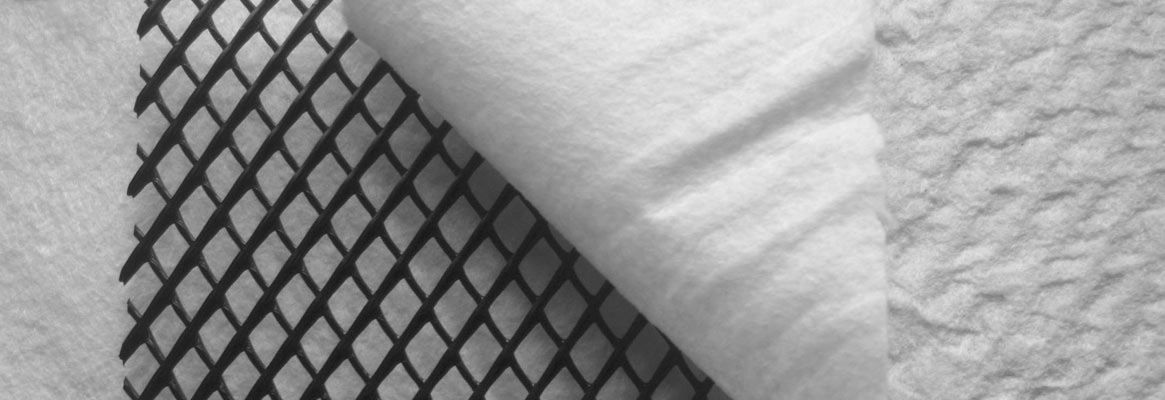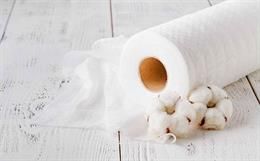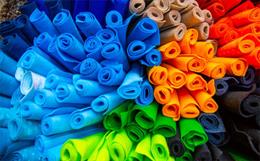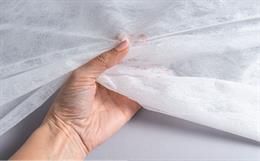Introduction:
Currently Technical Textile industry is worth 115 billiondollars. Worlds technical textiles market is to reach 125 billion dollar by2010. Within Asia, India can be one of the leading producer and consumer oftechnical textiles by 2012. The roll good production of nonwoven in India in 2001 was 15,000 tons/annum, it is 50,000 tons/annum in 2007 and it will be 90,000tons /annum in 2010. The growth rate of China and Turkey is 25% and 21%respectively, by the year 2012, nonwoven industry in India will be a 2 billiondollar industry including conversion industry.
The world production of non-woven rose from 2.16 million tonsin 1994 to 4.43 million tons in 2004 with an anticipated value jump from $9billion to $15.9 billion, respectively, during this period.
The rising market potential would push non-woven productionto 6.31 million tons in 2009 when the total value of production is anticipatedto be $25 billion.
Out of 2004 world production of 4.43 million tons, share ofEurope and North America are 1.35 and 1.16 million tons respectively, whereas Asia Pacific region is projected to increase its non-woven products output from 1.51million tons in 2004 to 1.75 million tons by 2009.
The nonwoven market in India has set the annual market growthat 12.5% with product applications from automotive, geotextiles andhealth/hygienic sectors providing the growth momentum. The Government of Indiahas also encouraged new investments in this sector by agreeing to supportprojects under the TUFS with higher capital subsidy.
Finishing
A sealing system seals the ends of the diaper, after thefinal cut. The finished diapers are then conveyed to a transversal foldinggroup which has the capacity to half-fold or three-fold the diapers by means ofbelts and cams.
Packing
An automatic counter and packer unit receives the finishedfolded product and discharges the stacks of diaper pre-counted in a funnelwhere the operator has to insert a polybag or card board box for the finalpacking.
Main Machine
Fig 17 Part of a diaper machine
The combined fluff mat ribbon over wrapped by a tissue is transported to an embossing unit through a conveyor belt. Then the mat is cut by a rotary cutter and the resulting pad obtained is spaced and top formed by a nonwoven (spunbond) fabric covering, while the bottom will be formed by a PVC or PE sheet. A unit composed by a set of rotary cutting knives provides to cut the diapers and the PVC or PE with the nonwoven, while a continuous suction system provides the removal of the cutting waste.
Applicator
Fig 18 Applicator machine
In this part of the machine, there is an applicator to fix the elastic in the leg region. Other applicators can operate according to the type and quantity of the diapers desired applying the frontal tapes and then the elastic band. Adhesive labels type Velcro are applied in order to fix the waist line of the diaper.
Baby Wipes:
Introduction:
Fig 21 Wipes Machine
Baby wipes are generally made from spunlace roll goods, its function is to clean the sensitive skin of the infants. They are sold in plastic tubs so that the cloth remains moist for a long time and it also allow easy dispensing.
The global wipe market during the last decade or so has jumped upto 6 billion dollars approximately.
- Western Europe - 577 million dollars to 2.7 billion dollars.
- North America - 649 million to 1.9 billion dollars.
- Asia Pacific - 578 million to 1 billion dollars.
In India, the wipe market is still in its nascent stage due to lack of awareness amongst the people.
Designing of Wipes:
Baby wipes should be designed in such a way that it should be durable for heavy duty cleaning, but still be disposable. The fabric for making these wipes should be chosen according to its durability, cost and absorbency. The fabric is treated with a mild cleaning solution which should be effective. Packaging is an important aspect while designing wipes. These packages are designed in such a way that it will easily disperse single wipe while keeping the other wipes moist until ready for use.
Raw Material:
Non-Woven Fabric - The material used for making baby wipes are generally non-woven fabrics made of cotton, rayon and polyester, polyethylene and polypropylene in small amount.
Cleansing Ingredients - The cleansing ingredients generally consists of water, mild detergents, moisturizing agents, fragrance and preservatives.
Packaging - The package should keep wipes moist, free from contamination and allow easy dispensing. Thermo-molded plastic containers are generally used.
Manufacturing Process:
Non-Woven Roll Goods
Spunlace non-woven roll goods are brought from outside and stored in the warehouse with proper care. Whenever required, these rolls are taken to the factory premises by trolleys, etc.
Chemical Preparation
The cleansing ingredients required for making wipes are prepared in large batch tanks. First water is added in the tank, then after other ingredients are added while heating the tank for proper blending into a homogenous mixture.
Non-Woven Treatment
The non-woven rolls are fed into the coating machine where cleansing solution is added. Different methods can be employed here, e.g., the fabric can be run through a trough of solution or sheets of fabric may be sprayed with the solution from a series of nozzles.
Packaging:
Fig 22
In this operation, the wipes are folded, stacked and transferred to their final package.
Conclusion
In this article, a brief review has been made regarding two most important technologies, i.e., spunbonding and spunlacing which are generally used for making 80% of the medical and hygienic products. Two important products namely diaper and wipes converter technology have been discussed also. Presently, India is importing most of the disposable non-woven products from the foreign countries. Now, it is high time for the Indian entrepreneurs to come forward and take the opportunity of TUFS and set up indigenous industry so that India become self sufficient in this sector.
Acknowledgement
The authors acknowledge with thanks the management of MANTRA for giving permission to publish this paper.
About the Authors:
The authors are associated with the Man Made Textile Research Association, Surat.
------------x-------------
Fig -2 Non-woven production in Asia Pacific Region
Non-woven textiles within the overall technical textiles is expected to grow globally at an average 8 per cent, with the Asia-Pacific region being projected to show a robust 9.6 per cent annual growth rate up to 2009.
Government of Gujarat has also shown interest about this industry and has announced 10% capital subsidy to the entrepreneurs those want to set up an industry in this sector. They have also sanctioned MANTRA for setting up a Centre of Excellence in Technical Textiles. The object behind this is that MANTRA will act as a Facilitator for this industry and will contribute to the following:-
- Product development activities.
- Consultancy.
- Training to the entrepreneurs and related people.
- Knowledge resource centre.
Manufacturing Technology:
Non-woven are defined as flat structured fabrics, such as sheets or webs, not made by weaving but by bonding and entangling fibres by means of mechanical, thermal or chemical processes.
The major non-woven technologies now available are needle-punching, thermal-bonding, spun-bonding, meltblowing and spunlacing/ hydro-entanglement.
The non-woven materials produced under these processes are widely used for in the areas of surgical gowns, diaper cover stocks, automotive linings, and military applications such as decontamination wipes and geo-textiles such as insulating tank/lake bunds etc. India, firmly entrenched in commodity textiles such as apparels/made-ups at the back of its strong cotton economy, has to elevate itself into high-value products such as technical textiles/non-woven.
At present, the total volume of non-woven produced from India is estimated at 35,000 tons, as compared to Chinas non-woven product output of 7.55 lakh tons (China is a dominating force in non-woven among the Asia-Pacific region and the third largest non-woven producing region after America and Europe because of life-style changes, the rising middle-class, and its economy). The investment on these technologies, especially the machinery, could work out at as low as $6 million (Rs 60 lakhs) or less for Indian entrepreneurs venturing into non-woven manufacture
This article will briefly discuss about the spunbonding and spunlacing process and the products made out of it. These two technologies are given emphasis because of the fact that it has been estimated that more than 80% of the medical and hygiene products are made by these technologies.
Spunbonding:
Fig 3 Rieter Spunbond line
Spunbonding is one of the most important techniques for producing polymer-laid nonwoven. It is based on the melt spinning technology. The polymer chips are fed to the extruder through the hopper where it gets melted and then the melt is forced by the spin pump through the spinneret having large number of orifices. The quenching duct located below the spinneret block continuously supply conditioned air to cool filaments. There is an auxiliary air supply at room temperature over the entire lines working width. Ventilator generated under pressure sucks the filament and mixed with the air and made to pass through a Venturi at high velocity and low pressure to a distributing chamber which does not allow the filaments to entangle. Afterwards the filaments are made to deposit as a random web on a moving sieve belt. The conveyor belt the carries the spun bonded web to the bonding zone. The web is then bonded either thermally, mechanically or chemically, depending on the material and the desired properties in the final fabric.
Characteristic of Spunbonded Web
The characteristics of spunbonded web are:-
- The fibrous structure is random.
- Opacity/area of the web is high.
- The web weight range between 10 200 g/m2.
- The diameter of the fibres lies between 15 to 35 m.
- Typical web thickness lies between 0.2 1.5 mm.
- The ratio of Strength to Weight is high in comparison to other nonwoven, woven and knitted structures.
Application
Fig 4 Air Filters Fig 5 Spunbond Geotextile
Spunbonding is used in various end use applications. Before 1970, they were predominantly used for durable applications, e.g., carpet backing, furniture, bedding and geotextiles. But since 1980, however, spunbonding entered into the disposable market also because of the acceptance of lighter spunbonded polypropylene webs as a cover stock for diapers and incontinence devices. The uses of spunbond can be broadly classified under the following heading:- Automotive, Civil engineering, Sanitary and Medical, Packaging, Home furnishing, House wrap and roofing.
Spunlacing:
Spunlacing uses high-speed jets of water to strike a web so that the fibres knot about one another. Spunlacing fabrics have specific properties as soft handle and drapability. Although DuPont introduced this technology officially in 1973, after several researches with Chicopec during 1963-70, Japan is the major producer of spunlacing in the world.
The steps of manufacturing spunlace fabric are shown below:
Fig 6
Rieter Spunlace Line
- Precursor web formation.
- Web entanglement.
- Water circulation.
- Web drying.
The web (dry, wet) is first completed and pre-wetted to eliminate air pockets and then water needled. The pressure of the water generally increases from the first to the last injector. The impinging of the water jets on the web causes the entanglement of fibres. A vacuum within the drum removes used water from the product. Lastly, the hydro entangled web is made to pass through a dryer for drying.
Characteristic of Spunlace Web
- The characteristics of the spunlace web are:-
- Less destruction of fibres/or filaments, therefore, high strength can be achieved at reduced level of fibre cost.
- No reinforced point, hence, it is soft, absorbent and permeable.
- Binders are not used for bonding and so the process is environment friendly.
- High production (approx. 300 m/min.).
- It can condense and bond several layers.
Application
At present, spunlaced nonwovens are used preferably as carded or carded/airlaid products as follows:-
Hospital use - Surgical gowns and drapes, operation cover sheets, bed sheets, towels, etc.
Medical use - Wound dressings, gauze, wet tissues, and cotton pads.
Sanitary products Baby wipes.
Fig 9 Baby Wipes
Wipes for household use, industrial wipes, wipes for car.
Fig 10 Industrial Wipes
Personal care - Wet wipes, cosmetic removal wipes, etc.
Fig 11 Wet Wipes
Home furnishing - Table cloths and napkins, curtains, blinds, etc.
Fig 12 Napkins
Clothing Interlining.
Fig 13 PP Interlining
Coating substrates - For synthetic leather, automotive industry.
Fig 14 Synthetic leather
Product Technology (Converter):
The roll goods that are formed by the above two technologies, i.e., spunbonding and spunlacing are not used directly by the consumer. There are numerous downstream converter technologies which process these roll goods into useful products like:- hygiene/ healthcare products, industrial products, house furnishing, etc. A brief summary of the products manufactured out of these two technologies have been given below in Table 1.
|
Sr. No. |
Product Name |
Method of manufacturing |
|
1 |
DOWNY (Trade Name) |
Dry wipe spunbonded 18 gsm. |
|
2 |
HEAVY WIPES (Trade Name) |
Viscose spunlace & patterned. |
|
3 |
Scrubber |
Spunbond + Spunlace. |
|
4 |
FILTRATE (Air filters) |
Airlaid + Spunbond + resinbond |
|
5 |
Car filter |
Spunbond + carded web resin bonded. |
|
6 |
Medical gown |
Spunbonded and inside lining made of cotton/ viscose spunlace. |
|
7 |
Diapers |
Spunlace + Spunbond. |
Table 1
In the next few paragraphs, two important converter technologies have been discussed.
Baby Diaper:
Fig 15 Baby Diaper machine
The Indian market for baby diaper is about Rs.70 crores per annum. It is estimated that the diaper market would grow at a rate of around 5-10%. The market estimate of baby diapers and nonwoven requirement in Indian market is given in Table 2.
|
Year |
Baby diaper demand |
Nonwoven demand |
||
|
Quantity (mn pcs) |
Value (Rs.Cr) |
Quantity (tones) |
Value (Rs.Cr) |
|
|
2001-02 |
53.85 |
70.00 |
161.55 |
1.78 |
|
2003-04 (Estimated) |
61.65 |
80.14 |
184.95 |
2.03 |
|
2007-08 (Projected) |
80.81 |
105.05 |
242.43 |
2.67 |
Table 2
Today, it is a fact that modern diapers meet all the properties and expectations of most consumers and, hence, more than 80% of the market is held by all developed countries.
Function of Diaper:
Fig 16 Baby diapers
Diapers are hygiene absorbent products engineered to absorb and contain body fluid of the baby. When used they are adjusted and fastened around babys legs and buttock.
Composition of Diaper:
An average diaper weighs between 45 and 50 g and is primarily made of pulp (fluff pulp), polypropylene, polyethylene, super absorbent polymer (SAP) as well as small amounts of tapes, elastics and adhesive
materials. Day by day the weight of diaper is gradually decreasing and it is becoming thinner and more efficient as well. The composition of an average diaper is given below.
Core (70%) - The quality of a diaper depends strongly on the absorbance capacity of the body fluid and its retention. It consists mainly of fluff pulp (60% of a diaper) and a super absorbent material (SAP) (27% of a diaper).
Polypropylene (10%) Most diapers have a polypropylene top sheet which protects the babys skin from re-wetness.
Polyethylene (13%) - The back sheet of diapers consists mostly of polyethylene and provides leakage protection for baby clothes.
Other components (7%) - These are tapes, elastics and adhesives.
Diaper Construction:
A diaper consists of an absorbent core between a porous top sheet and an impermeable back sheet. The top sheet must do three things: (1) it must allow body fluid to flow through it; (2) keep the liquid away from the babys skin; (3) retain the structural integrity of the absorbent core. It is generally made of porous, hydrophobic substance, for example, polyester or polypropylene nonwoven fabric. The back sheet helps to keep the babys clothing dry and is a nonporous, hydrophobic substance such as a polyethylene film. The absorbent core takes in the liquid, distributes it to all regions of the core, and holds the liquid under pressure from the baby.
Diaper Cost Analysis:
AMCOL a super absorbent polymer (SAP) manufacturer put out a market breakdown in 1996 for diaper material cost, which is given below:-
Table 3: Breakdown of Diaper Material Cost
|
Diaper composition |
% Costs per diaper |
|
Fluff pulp |
19.7 |
|
SAP (Super Absorbent Polymer) |
27.7 |
|
Bottom Sheet (PVC or PE) |
9.5 |
|
Nonwoven top sheet (spunbond pp) |
15.5 |
|
Carrier tissue |
2.3 |
|
Lycra or rubber |
2.1 |
|
Adhesive (multi-purpose) |
2.5 |
|
Elastic Adhesive |
1.8 |
|
Tape Tab pressure sensitive |
5.5 |
|
Others |
13.4 |
|
Total |
100.0 |
Manufacturing Technology:
Feeding
The main raw material is cellulose pulp in rolls. The fluffing system is obtained through a hammer mill inside an asonic cabin which reduces the noise. The entry of the pulp roll is regulated by a speed variater so does the weight. A super absorbent polymer powder is applied at this stage on the fluffed pulp.







